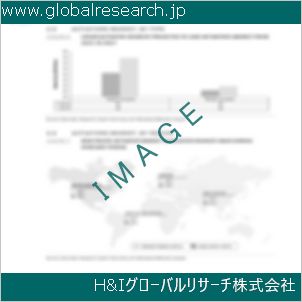Table of Contents
1 Industry Overview of 4-Vinylpyridine
1.1 Definition and Specifications of 4-Vinylpyridine
1.1.1 Definition of 4-Vinylpyridine
1.1.2 Specifications of 4-Vinylpyridine
1.2 Classification of 4-Vinylpyridine
1.3 Applications of 4-Vinylpyridine
1.3.1 Nuclear Application
1.3.2 Non-Nuclear Application
1.4 Industry Chain Structure of 4-Vinylpyridine
1.5 Industry Overview and Major Regions Status of 4-Vinylpyridine
1.5.1 Industry Overview of 4-Vinylpyridine
1.5.2 Global Major Regions Status of 4-Vinylpyridine
1.6 Industry Policy Analysis of 4-Vinylpyridine
1.7 Industry News Analysis of 4-Vinylpyridine
2 Manufacturing Cost Structure Analysis of 4-Vinylpyridine
2.1 Raw Material Suppliers and Price Analysis of 4-Vinylpyridine
2.2 Equipment Suppliers and Price Analysis of 4-Vinylpyridine
2.3 Labor Cost Analysis of 4-Vinylpyridine
2.4 Other Costs Analysis of 4-Vinylpyridine
2.5 Manufacturing Cost Structure Analysis of 4-Vinylpyridine
2.6 Manufacturing Process Analysis of 4-Vinylpyridine
3 Technical Data and Manufacturing Plants Analysis of 4-Vinylpyridine
3.1 Capacity and Commercial Production Date of Global 4-Vinylpyridine Major Manufacturers in 2023
3.2 Manufacturing Plants Distribution of Global 4-Vinylpyridine Major Manufacturers in 2023
3.3 R&D Status and Technology Source of Global 4-Vinylpyridine Major Manufacturers in 2023
3.4 Raw Materials Sources Analysis of Global 4-Vinylpyridine Major Manufacturers in 2023
4 Capacity, Production and Revenue Analysis of 4-Vinylpyridine by Regions, Types and Manufacturers
4.1 Global Capacity, Production and Revenue of 4-Vinylpyridine by Regions 2019-2024
4.2 Global and Major Regions Capacity, Production, Revenue and Growth Rate of 4-Vinylpyridine 2019-2024
4.3 Global Capacity, Production and Revenue of 4-Vinylpyridine by Types 2019-2024
4.4 Global Capacity, Production and Revenue of 4-Vinylpyridine by Manufacturers 2019-2024
5 Price, Cost, Gross and Gross Margin Analysis of 4-Vinylpyridine by Regions, Types and Manufacturers
5.1 Price, Cost, Gross and Gross Margin Analysis of 4-Vinylpyridine by Regions 2019-2024
5.2 Price, Cost, Gross and Gross Margin Analysis of 4-Vinylpyridine by Types 2019-2024
5.3 Price, Cost, Gross and Gross Margin Analysis of 4-Vinylpyridine by Manufacturers 2019-2024
6 Consumption Volume, Consumption Value and Sale Price Analysis of 4-Vinylpyridine by Regions, Types and Applications
6.1 Global Consumption Volume and Consumption Value of 4-Vinylpyridine by Regions 2019-2024
6.2 Global and Major Regions Consumption Volume, Consumption Value and Growth Rate of 4-Vinylpyridine 2019-2024
6.3 Global Consumption Volume and Consumption Value of 4-Vinylpyridine by Types 2019-2024
6.4 Global Consumption Volume and Consumption Value of 4-Vinylpyridine by Applications 2019-2024
6.5 Sale Price of 4-Vinylpyridine by Regions 2019-2024
6.6 Sale Price of 4-Vinylpyridine by Types 2019-2024
6.7 Sale Price of 4-Vinylpyridine by Applications 2019-2024
6.8 Market Share Analysis of 4-Vinylpyridine by Different Sale Price Levels
7 Supply, Import, Export and Consumption Analysis of 4-Vinylpyridine
7.1 Supply, Consumption and Gap of 4-Vinylpyridine 2019-2024
7.2 Global Capacity, Production, Price, Cost, Revenue, Supply, Import, Export and Consumption of 4-Vinylpyridine 2019-2024
7.3 USA Capacity, Production, Price, Cost, Revenue, Supply, Import, Export and Consumption of 4-Vinylpyridine 2019-2024
7.4 EU Capacity, Production, Price, Cost, Revenue, Supply, Import, Export and Consumption of 4-Vinylpyridine 2019-2024
7.5 China Capacity, Production, Price, Cost, Revenue, Supply, Import, Export and Consumption of 4-Vinylpyridine 2019-2024
7.6 Japan Capacity, Production, Price, Cost, Revenue, Supply, Import, Export and Consumption of 4-Vinylpyridine 2019-2024
8 Major Manufacturers Analysis of 4-Vinylpyridine
8.1 Manufacturer One
8.1.1 Company Profile
8.1.2 Product Picture and Specifications
8.1.2.1 Type I
8.1.2.2 Type II
8.1.2.3 Type III
8.1.3 Capacity, Production, Price, Cost, Gross and Revenue
8.1.4 Contact Information
8.2 Manufacturer Two
8.2.1 Company Profile
8.2.2 Product Picture and Specifications
8.2.2.1 Type I
8.2.2.2 Type II
8.2.2.3 Type III
8.2.3 Capacity, Production, Price, Cost, Gross and Revenue
8.2.4 Contact Information
8.3 Manufacturer Three
8.3.1 Company Profile
8.3.2 Product Picture and Specifications
8.3.2.1 Type I
8.3.2.2 Type II
8.3.2.3 Type III
8.3.3 Capacity, Production, Price, Cost, Gross and Revenue
8.3.4 Contact Information
8.4 Manufacturer Four
8.4.1 Company Profile
8.4.2 Product Picture and Specifications
8.4.2.1 Type I
8.4.2.2 Type II
8.4.2.3 Type III
8.4.3 Capacity, Production, Price, Cost, Gross and Revenue
8.4.4 Contact Information
8.5 Manufacturer Five
8.5.1 Company Profile
8.5.2 Product Picture and Specifications
8.5.2.1 Type I
8.5.2.2 Type II
8.5.2.3 Type III
8.5.3 Capacity, Production, Price, Cost, Gross and Revenue
8.5.4 Contact Information
…
9 Marketing Trader or Distributor Analysis of 4-Vinylpyridine
9.1 Marketing Channels Status of 4-Vinylpyridine
9.2 Traders or Distributors with Contact Information of 4-Vinylpyridine by Regions
9.3 Ex-work Price, Channel Price and End Buyer Price Analysis of 4-Vinylpyridine
9.4 Regional Import, Export and Trade Analysis of 4-Vinylpyridine
10 Industry Chain Analysis of 4-Vinylpyridine
10.1 Upstream Major Raw Materials Suppliers Analysis of 4-Vinylpyridine
10.1.1 Major Raw Materials Suppliers with Contact Information Analysis of 4-Vinylpyridine
10.1.2 Major Raw Materials Suppliers with Supply Volume Analysis of 4-Vinylpyridine by Regions
10.2 Upstream Major Equipment Suppliers Analysis of 4-Vinylpyridine
10.2.1 Major Equipment Suppliers with Contact Information Analysis of 4-Vinylpyridine
10.2.2 Major Equipment Suppliers with Product Pictures Analysis of 4-Vinylpyridine by Regions
10.3 Downstream Major Consumers Analysis of 4-Vinylpyridine
10.3.1 Major Consumers with Contact Information Analysis of 4-Vinylpyridine
10.3.2 Major Consumers with Consumption Volume Analysis of 4-Vinylpyridine by Regions
10.4 Supply Chain Relationship Analysis of 4-Vinylpyridine
11 Development Trend of Analysis of 4-Vinylpyridine
11.1 Capacity, Production and Revenue Forecast of 4-Vinylpyridine by Regions and Types
11.1.1 Global Capacity, Production and Revenue of 4-Vinylpyridine by Regions 2024-2029
11.1.2 Global and Major Regions Capacity, Production, Revenue and Growth Rate of 4-Vinylpyridine 2024-2029
11.1.3 Global Capacity, Production and Revenue of 4-Vinylpyridine by Types 2024-2029
11.2 Consumption Volume and Consumption Value Forecast of 4-Vinylpyridine by Regions, Types and Applications
11.2.1 Global Consumption Volume and Consumption Value of 4-Vinylpyridine by Regions 2024-2029
11.2.2 Global and Major Regions Consumption Volume, Consumption Value and Growth Rate of 4-Vinylpyridine 2024-2029
11.2.3 Global Consumption Volume and Consumption Value of 4-Vinylpyridine by Types 2024-2029
11.2.4 Global Consumption Volume and Consumption Value of 4-Vinylpyridine by Applications 2024-2029
11.3 Supply, Import, Export and Consumption Forecast of 4-Vinylpyridine
11.3.1 Supply, Consumption and Gap of 4-Vinylpyridine 2024-2029
11.3.2 Global Capacity, Production, Price, Cost, Revenue, Supply, Import, Export and Consumption of 4-Vinylpyridine 2024-2029
11.3.3 USA Capacity, Production, Price, Cost, Revenue, Supply, Import, Export and Consumption of 4-Vinylpyridine 2024-2029
11.3.4 EU Capacity, Production, Price, Cost, Revenue, Supply, Import, Export and Consumption of 4-Vinylpyridine 2024-2029
11.3.5 China Capacity, Production, Price, Cost, Revenue, Supply, Import, Export and Consumption of 4-Vinylpyridine 2024-2029
11.3.6 Japan Capacity, Production, Price, Cost, Revenue, Supply, Import, Export and Consumption of 4-Vinylpyridine 2024-2029
12 New Project Investment Feasibility Analysis of 4-Vinylpyridine
12.1 New Project SWOT Analysis of 4-Vinylpyridine
12.2 New Project Investment Feasibility Analysis of 4-Vinylpyridine
13 Conclusion of the Global 4-Vinylpyridine (CAS 100-43-6) Industry 2024 Market Research Report
| ※参考情報 4-ビニルピリジン(4-Vinylpyridine、CAS番号100-43-6)は、化学式C₈H₉Nを持つ有機化合物であり、ピリジン環にビニル基が結合した構造を持っています。この化合物は、常温では無色から薄黄色の液体または固体として存在し、独特の香りがあります。4-ビニルピリジンは、主にポリマーやコポリマーの合成に利用される重要な中間体として知られています。 4-ビニルピリジンの最も顕著な特徴は、その化学構造にあります。ピリジン環は、窒素原子を含む六員環であり、芳香族性を示します。このため、4-ビニルピリジンは他の化合物との反応性が高く、特に共重合において重要な役割を果たします。この化合物は、エチレンと同様にビニル基を持っているため、自由基重合や共重合を通じて、さまざまなポリマーの合成が可能です。 4-ビニルピリジンの種類は主に、その共重合に由来します。通常、4-ビニルピリジンは、ポリスチレンやポリエチレンなどの他のビニル系モノマーと共重合されます。このプロセスを通じて、耐熱性や耐薬品性などの特性を持つポリマーを生成することができます。さらに、4-ビニルピリジンは、アニオン性やカチオン性の性質を持つポリマーを合成する際にも利用され、さまざまな機能を持つ高分子材料の開発に寄与しています。 用途に関して、4-ビニルピリジンは様々な産業で広く利用されています。特に、バインダーや接着剤、塗料、コーティング剤などの製造において重要な役割を果たします。これらの製品において、4-ビニルピリジンを含むポリマーは、接着力や耐久性、耐水性などの特性を向上させるために利用されます。 また、この化合物は、電池材料やセンサー、キャタリストなどの新しい機能的材料の開発にも利用されることがあります。さらに、医療分野にも応用があり、薬物送達システムや生体材料の合成に用いられるケースがあります。特に、4-ビニルピリジンを用いることで、バイオコンジュゲートやナノキャリアの合成が可能となり、医薬品の効率的な送達が期待されています。 関連技術に関して言えば、4-ビニルピリジンの合成や利用に関する研究は非常に活発であり、持続可能な化学プロセスやグリーンケミストリーの観点からも重要視されています。たとえば、環境に配慮した原料や手法を用いることで、製品のライフサイクルを通じて環境負荷を低減することが求められています。このような観点から、4-ビニルピリジンを利用した新たなポリマーの開発や、合成プロセスの最適化が進められています。 さらに、ナノテクノロジーや材料科学の進展に伴い、4-ビニルピリジンを基盤とした新しい材料の研究が進んでいます。例えば、機能性ナノ粒子や自己修復材料など、先進的な性能を持つ材料の合成が行われており、これにより多くの産業分野での応用が期待されています。 総じて、4-ビニルピリジンは、その独特な化学構造と高い反応性を持つため、多様な材料の合成において重要な役割を果たしています。工業的な用途から医療分野に至るまで、広範な応用があるため、今後もその研究と開発が進むことが予想されます。これにより、4-ビニルピリジンを基にした新しい機能性材料や製品の開発が進展し、さまざまな分野でのイノベーションが続くでしょう。 |
❖ 免責事項 ❖
http://www.globalresearch.jp/disclaimer

-gr.jpg)










